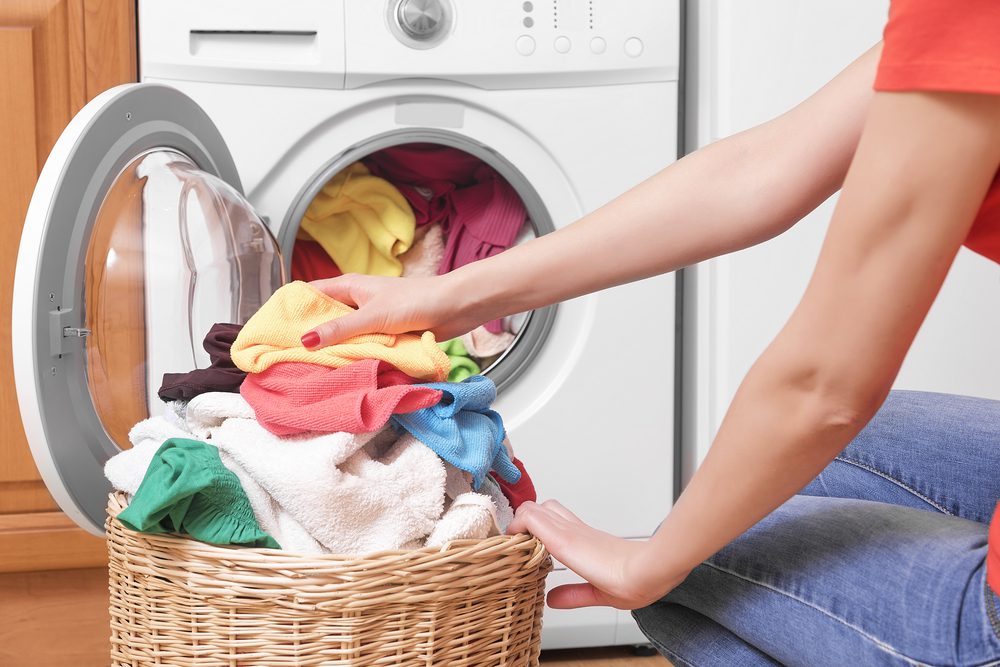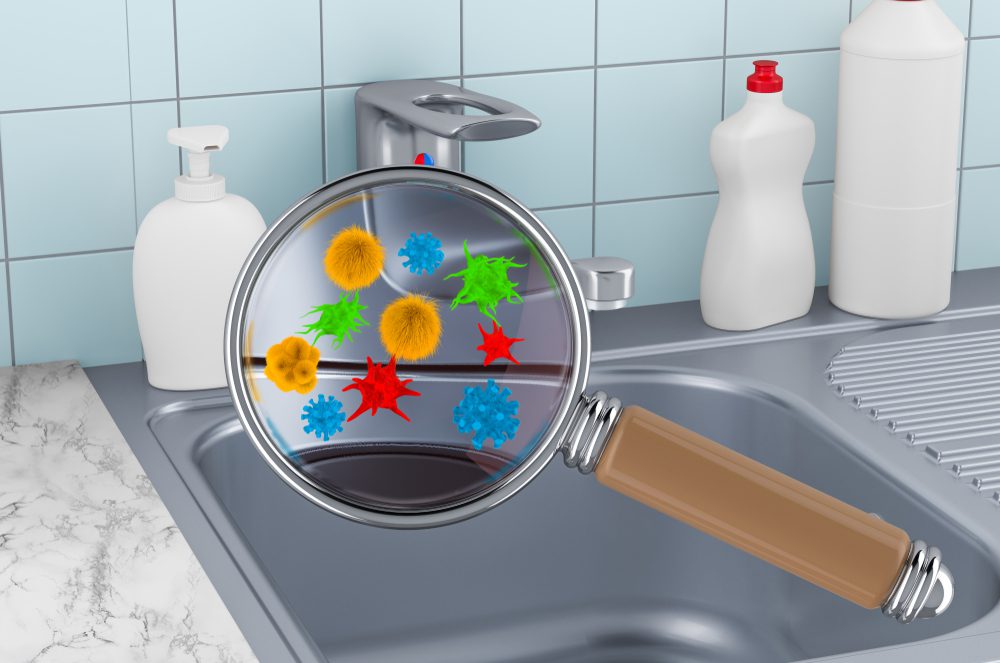Did you know that germs live almost everywhere in your house? Some of them aren’t a threat to our health but others can be very seriously dangerous. Mold, E. coli or salmonella can cause nasty infections and the symptoms vary from fever, diarrhea, abdominal cramps or difficulty breathing (depending on the type of bacteria).
To reduce the risk of getting sick, you need to be aware of those places where germs are lurking. I know what you’re thinking. The toilet seat is one of them. Surprisingly, this isn’t the most germ-infested place! According to International Fund for National Sanitation, also called NSF, toilet seats aren’t even in the top 10 germiest spots in your house.
Check our list with 10 surprising places germs are living in your home and get ready to clean them!

Desk
Your home office is where you keep many items: laptop, phone, keys, papers and so on. Therefore, this surface might be a hot spot for germs to spread. A study initiated in 2021 by Fasthosts and carried out by microbiologist Dr. Jonathan Cox from Aston University shows how dirty your home desk actually is. Using a score based on their cleanliness called Relative Light Unit (RLU), the office achieved an impressive score of 606 whilst the toilet registered a score of 209. Gross, I know.
Having a desk that is used daily means touching the areas where germs live with your hands. To reduce the risk of coming in contact with them, use antibacterial wipes to clear your home office once a day.
Kitchen sink
What? Doesn’t it get bacteria-free every time I wash my hands? Well, seems like it doesn’t. Being wet and moist, the kitchen sink becomes the perfect place for E. coli to live and spread as these types of bacteria feed on the rest of the food from your plates. Not to mention that humidity creates the perfect conditions for mold to grow. Also, researchers discovered that dish sponges, commonly placed near the sink, have one of the highest levels of bacteria.
So, your kitchen sink needs more than some water and soap in order to clean it and kill germs. You can try this: pour a cup of warm water down the drain and then add another cup of bleach. Leave it overnight and keep germs at bay by repeating this cleaning method every week.
Coffee maker
You might want to clean your coffee maker after you read this. The water reserve is where most of the bacteria is hiding because it’s a dark and damp place. Another study made by International Fund for National Sanitation found that half of the coffee reservoirs they tested contained mold and yeast. Now just think about the fact that your device is using THAT water to give you your everyday shot of caffeine. Pretty disgusting, right?
As you might expect, the intense heat from the machine destroys some nasty microorganisms, but it’s not making them all disappear. To clean the inside of the coffee maker, pour a mix of vinegar and water into the water reserve and run it through the machine. To get rid of the vinegar taste and smell, repeat the process three times using clean water.
Shower curtain
Another item that beats the toilet seat when it comes to bacterial presence. A study found that the microbial life of a regular shower curtain was 60 times longer than that of a toilet bowl. How so? It seems that bacteria found on your toilet seat can spread to your shower curtain due to the spray radius of the plume.
Also, being damp almost all the time, shower curtains create the ideal home for mold, a serious hidden danger in your home. Besides smelling musty, mold can cause an allergic reaction and it’s very important to avoid inhaling it.
To kill any mold or bacteria, clean your shower curtain using water and detergent or even spraying it with some sanitizer.
Bathtub
Filling your bathtub with hot water and using shower gel and shampoo doesn’t make bacteria go away. According to a study by Soakology, the drain can contain 119,468 germs per square inch. Doctors reassure that once the tub is filled with water the microbes will become highly diluted and that a strong immune system will fight against it. However, people with skin diseases should focus on cleaning their bathtubs more often.
And there’s mold too. The grout between the tiles in the bathroom and the sealant around your bath are both ideal places for mold to grow.
To clean and disinfect your bathtub use a bathroom cleaner, let the solution sit for a few minutes, then rinse it with fresh water. As a final step, wipe it down with a clean, dry towel.

Remote controls
Most people forget to clean their remote controls. Just think about the places where you keep it: on the table, on the countertop, sometimes even on the floor. Not to mention how many times you and other family members touch it. Besides, most TV remotes have too many nooks and crannies making it very difficult to clean them. This is why toddlers shouldn’t play with a remote control as they will most probably try putting them into their mouths.
You don’t have to clean it daily, but to prevent and stop germs from spreading, try wiping your TV remote with 60% alcohol wipes at least once every two days.
Pet bowls
Dogs are always sniffing everything from shoes to grass and even poop. That’s why dangerous germs from out there can easily be spread to the dog’s bowls. Some studies showed that ceramic and plastic bowls are actually helping bacteria to adhere to the bowl’s surface, while the stainless-steel ones have far fewer germs.
Anyhow, you should be aware that dog bowls are a fomite, an object that may be contaminated with infectious agents. Unfortunately, those nasty little things can spread bacteria from dog to human and the other way around. To protect yourself and your family, it’s very important to clean the bowl daily with soap and warm water.
Toothbrush holders
For those that still own a classic toothbrush and not an electric one, you might want to know that the place where you keep it (maybe it’s a cup or just a simple holder) contains a lot of germs. I mean, when was the last time when you cleaned your toothbrush holder? Most people tend to forget about this one. Personally, I do sometimes. I remember one time I looked inside the cup and I saw some tiny mold spots. Gross, yeah!
Also, a toothbrush holder is usually placed somewhere close to the toilet. Every time you flush it, an aerosol spray of toilet debris is scattered all over your bathroom. So those small particles full of bacteria can easily reach your toothbrush cup. A good idea would be to clean it with soapy water once a week to keep those germs away.

Washing machine
I bet you didn’t know about this one. Yes, your washing machine isn’t germ-free. The rubber seal and the detergent compartment provide a perfect environment for bacteria to thrive, especially because many washing machines are now energy-saving. This might save some money, but washing clothes using just cold and lukewarm water isn’t enough to kill certain bacteria. In fact, researchers found that only temperatures above 140 degrees Fahrenheit can actually destroy pathogenic organisms.
Doctors recommend removing washed laundry as soon as possible and keeping everything dry. For sanitizing your washing machine, run an empty hot cycle with bleach at least once a month.
Fruit bowl
Until those fruits make it to your house, many people put their hands on them. Everybody knows it’s very important to wash fruit before eating it, but how many people actually wash fruits before putting them into a bowl? Not doing this will carry all the bacteria and chemicals from fruits to the basket where you keep them.
This is why it’s very important to wash your fruits and clean the basket before filling it. If you can’t put it into the dishwasher, try washing it by hand using hot water and dish soap. Tip: make sure to dry well both the fruit and the bowl as humidity creates the perfect environment for bacteria to survive.
If you liked this article, follow this link for 12 Secrets To Having a Clean House!





